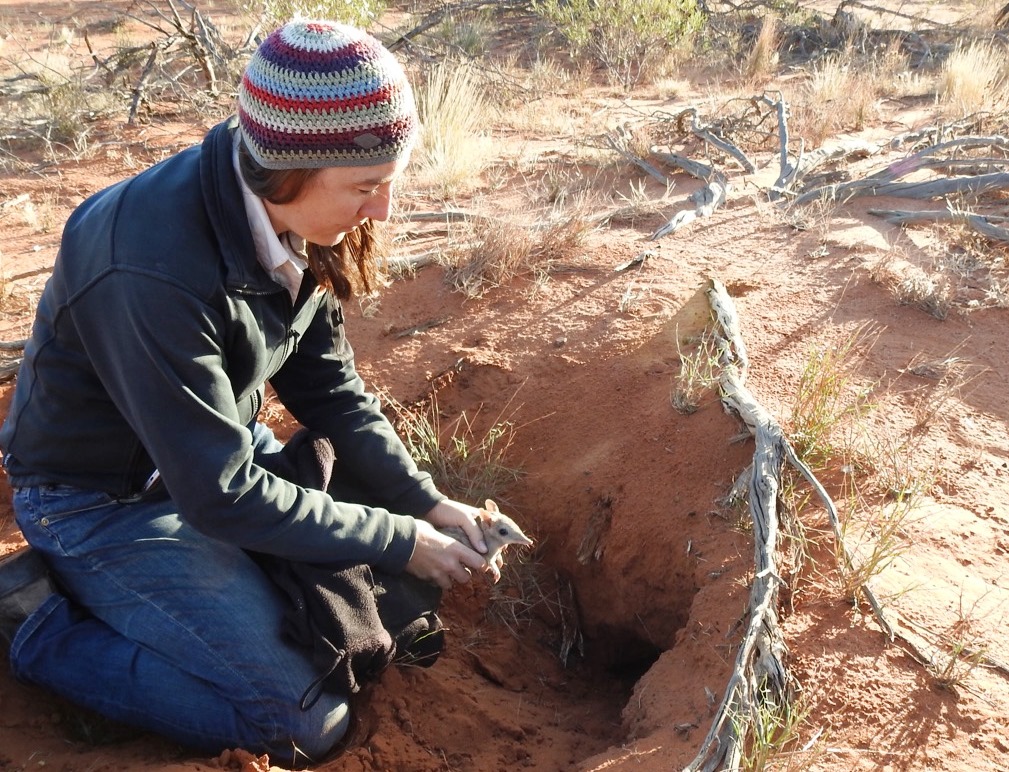Roxby Downs conservationists working with threatened marsupials impacted by drought score funding from WIRES and Landcare Australia

Burrowing Bettong. Photo by Nathan Beerkens
Six hours north of Adelaide in the red sand desert, conservationists are mounting a battle to protect some of Australia’s rarest species including burrowing bettongs, greater bilbies and western barred bandicoots from the impacts of the worst drought in recent memory.
With the region ravaged by exceptionally low rainfall in 2018 and 2019, coupled with the hottest summers ever recorded in northern South Australia, Arid Recovery is relying on food and water stations and a proposed ‘drought paddock’ to protect animals pushed to the brink.
Reintroduced to Arid Recovery from 1998, the populations of threatened species have been drastically affected, some declining up to 95 per cent and Greater Stick-nest Rats faring the worst, decreasing from over 200 animals to fewer than 5.
With funding support from WIRES Landcare Australia Wildlife Relief and Recovery Grants, Arid Recovery hope to significantly rebuild populations.

Dr. Tuft releases bandicoot into burrow. Photo by Tori Wilson
“While the region is arid, these conditions have pushed the vegetation and native wildlife to their limits,” says Katherine Tuft of Arid Recovery.
“Throughout the drought we have implemented measures to support native species within the reserve, including supplementary feed and water. These have been partially successful, but need to continue until the drought breaks properly and native vegetation regenerates. We need to expand the number of water and feed stations available to these species.”
Dr Tuft adds the need for higher nutritional quality feed such as grains with greater fat and protein content as animals are not improving in condition on the feed currently have available (saltbush pellets).
To better prepare the reserve for future droughts, Arid Recovery will also install two new artificial soaks were they can efficiently provide supplementary water in areas of key habitat.
“This involves connecting polypipe lines to an artesian water source. We will establish a drought paddock where native herbivores will be managed so that vegetation condition can be improved and maintained. The area will be used for a selection of more vulnerable native herbivores to access feed during future droughts.”
Arid Recovery is supported by BHP, South Australian Department for Environment and Water, Bush Heritage and the University of Adelaide.
Launched in April 2020, the WIRES Landcare Australia Wildlife Relief and Recovery Grants is a pioneering alliance between two not-for-profits that have been part of the fabric of local communities for over 30 years.
64 environmental groups across the country will benefit from the landmark $1.1million grants partnership supporting recovery of wildlife habitats impacted by bushfire and drought.
Made possible due to the unprecedented volume of donations to WIRES from within Australia and around the world following the Black Summer bushfires, this grants program will support wide-ranging regeneration projects focused on restoring habitat impacted by the bushfires.
Projects include rainforest revegetation, installation of nest boxes to replace destroyed tree hollows for decimated native species, feeding programs for endangered wildlife, management of invasive weeds, erosion control and protection of our waterways and aquatic habitat.



